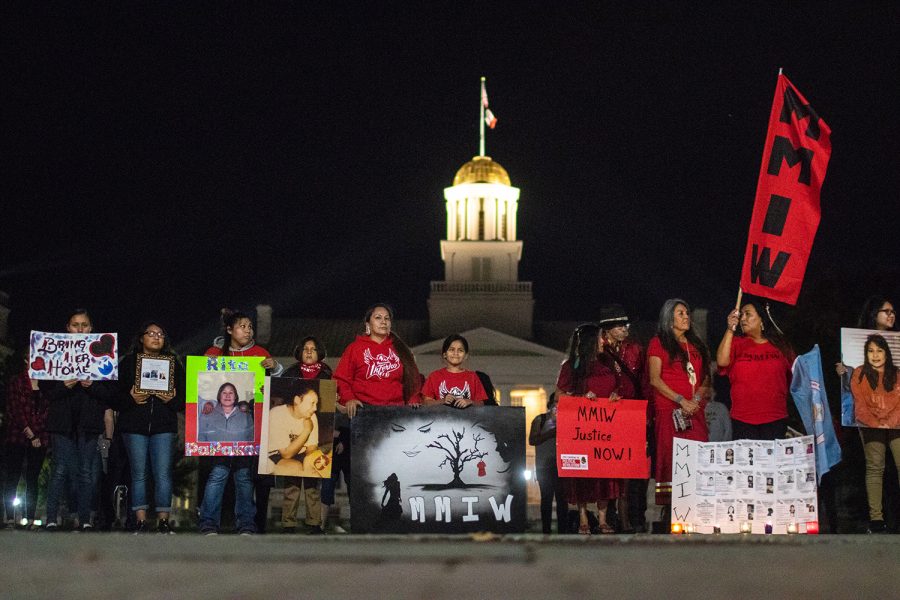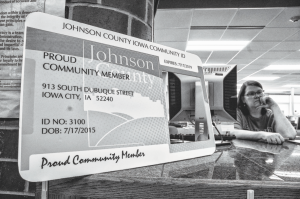Vigil sheds light on the mistreatment of indigenous women in the U.S.
The Rita J. Papakee Foundation wants to bring the mistreatment and rates of missing Native women out of the dark with a candlelight vigil.
Community members stand in silence during a vigil on the pentacrest on October 8th 2018. The vigil was held in honor of all Missing Murdered Indigenous Women. (Megan Nagorzanski/The Daily Iowan)
October 9, 2018
The Rita J. Papakee Foundation held a prayer and candlelight vigil on Monday on the Pentacrest in honor of murdered and missing Indigenous women.
University of Iowa senior Dawson Davenport, the founder of the Rita J. Papakee Foundation, created the event in honor of Rita Papakee.
“Rita Papakee has been missing for three years, and there has been no major interest in her disappearance, as there was for some of the more recent hideous crimes on women,” Davenport said.
The vigil also noted the recent slaying of Celia Barquin Arozamena of Iowa State University.
Davenport included Barquin Arozamena in the vigil to bring awareness to what he said was the lack of news coverage surrounding her death and the accused slayer.
Davenport used his own voice to bring more awareness for issues surrounding the cases that involve women of color such as Barquin Arozamena and Papakee. Approximately 30 people attended the event.
“I think it is very important to raise awareness about this issue, because there are families who have no closure, who feel like the world has forgotten about them, and/or that as Native or Indigenous people, we are forgotten about,” Davenport said.
Vigil attendant Jo Ironshield of Davenport said the problem has become too big to ignore.
“The issue is no longer just us,” she said. “The only thing that I’m concerned about this is we get no media play whatsoever. You don’t hear our news out there, and the other thing is that this not just reaching out to our community, but other communities as well. A family member goes for a walk; they disappear — that’s the heartbreak that we all feel.”
The National Indigenous Women’s Resource Center said the movement “Safety for Native Women” was initiated in 2005.
RELATED: UI students rally for indigenous Peoples Day on the Pentacrest
The movement was prompted by the discovery that homicide was the third leading cause of death among Native women between the ages of 15 and 34 between 1979 and 1992.
A study by the U.S. Justice Department also revealed that in some tribal communities, Native women are exposed to homicide rates that are 10 times higher than the national average.
Jacqueline Agtuca of the National Indigenous Women’s Resource Center noted, however, that the study did not include the number of missing Native women.
Troy Eid, who served on the Indian Law and Order Commission, released a report titled “A Roadmap for Making Native America Safer” in 2013 that suggests the lack of awareness for missing Indigenous women is partly to blame of the government.
“Unfortunately, the [Bureau of Indian Affairs], the Federal Bureau of Investigation, and virtually all other federal law-enforcement agencies serving Indian country have collected and analyzed very little data on Indian people and communities,” the report stated.
Miriam Kashia, a vigil attendee from North Liberty, said she had the opportunity to talk to people who had personally faced the experience of losing a family member.
“… nobody seems to be doing anything about it. Nobody seems to care. Well, I care.”






